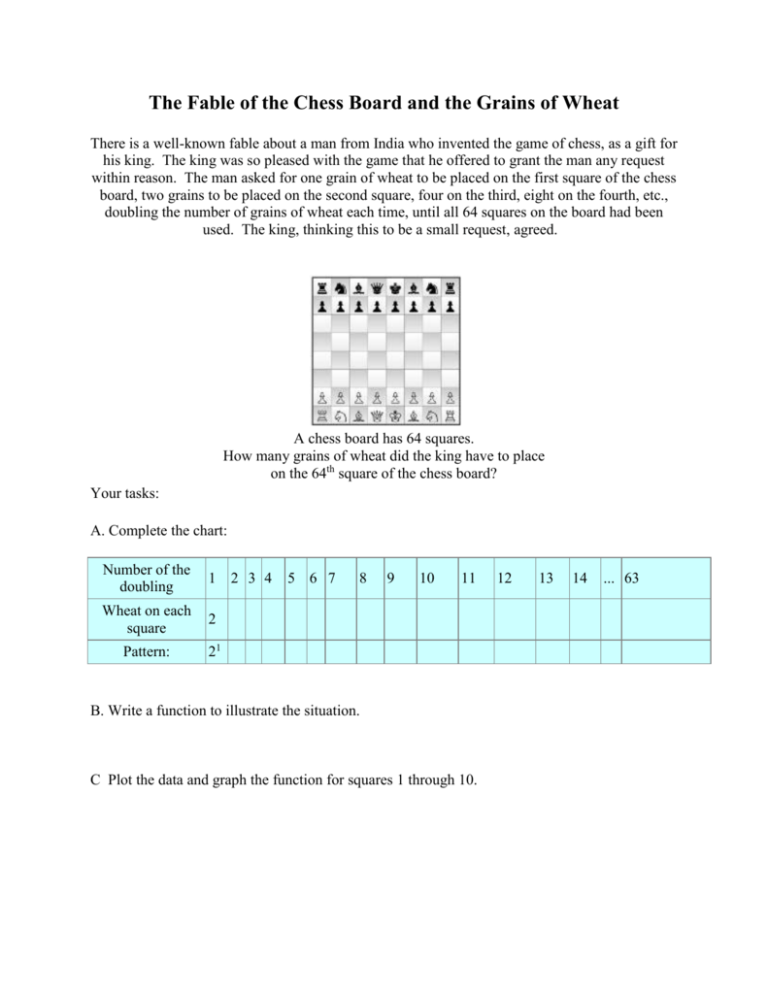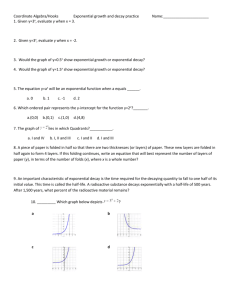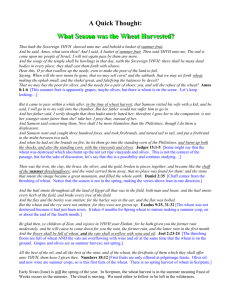Chessboard Wheat Fable: Exponential Growth Worksheet
advertisement

The Fable of the Chess Board and the Grains of Wheat There is a well-known fable about a man from India who invented the game of chess, as a gift for his king. The king was so pleased with the game that he offered to grant the man any request within reason. The man asked for one grain of wheat to be placed on the first square of the chess board, two grains to be placed on the second square, four on the third, eight on the fourth, etc., doubling the number of grains of wheat each time, until all 64 squares on the board had been used. The king, thinking this to be a small request, agreed. A chess board has 64 squares. How many grains of wheat did the king have to place on the 64th square of the chess board? Your tasks: A. Complete the chart: Number of the doubling 1 2 3 4 Wheat on each square 2 Pattern: 21 5 6 7 8 9 10 11 B. Write a function to illustrate the situation. C Plot the data and graph the function for squares 1 through 10. 12 13 14 ... 63 Answers A. Complete the chart: Number of the doubling 1 2 3 4 5 6 7 8 9 10 11 12 13 ... Wheat on each 2 4 8 16 32 64 128 256 512 1024 2048 4096 8192 ... square Pattern: 21 22 23 24 25 26 27 28 29 210 211 212 213 63 9,223,372,036,854,775,808 263 FYI: In total, the king placed 18,446,744,073,709,551,615 grains of wheat on the board. This is more wheat than exists in the entire world. China is the largest producer of wheat, producing approximately 3.8 billion bushels per year. It would take China well over 6000 years to fill the 64 squares on the chess board. B. Function: y=1(1+1.00)^X From Pattern: y=2^X C. Graph: horizontal axis = square on board vertical axis = wheat











